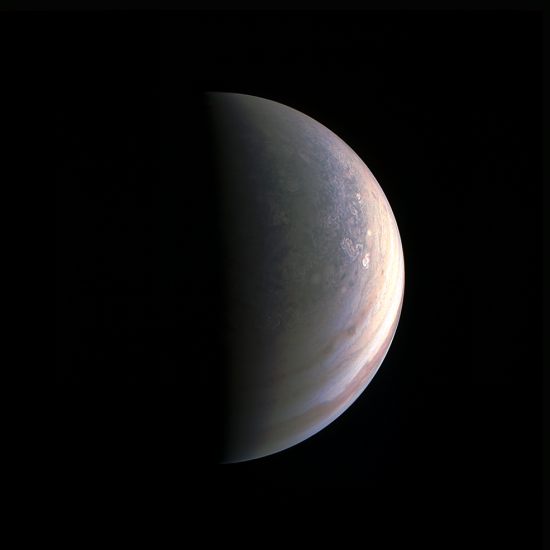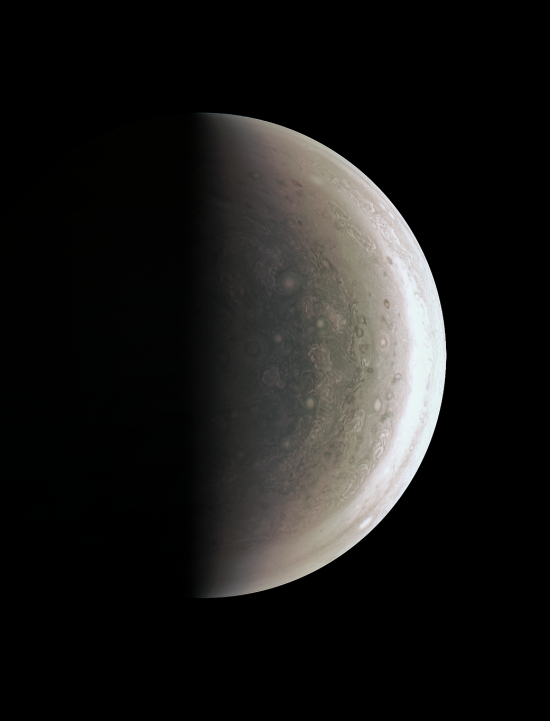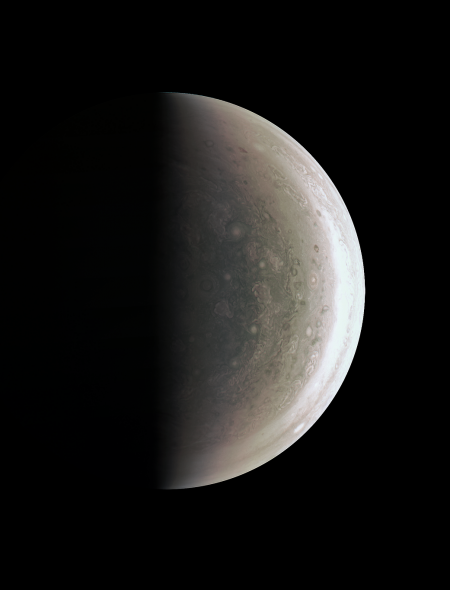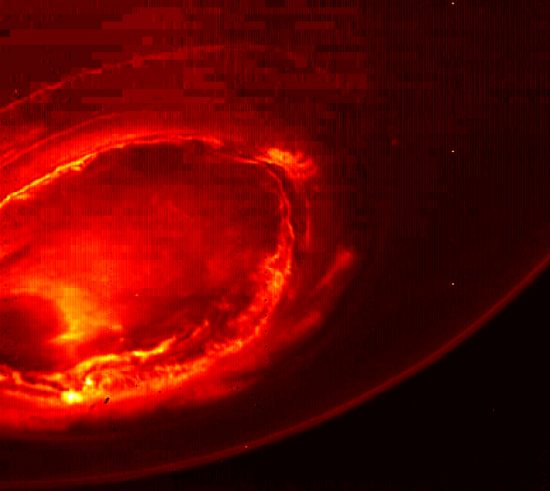September 3, 2016 – The north pole of Jupiter is unlike anything we have ever seen before in our Solar System states NASA after Juno’s first close encounter with the planet. The images show a level of weather activity that is unprecedented. The data and images Juno has delivered since its first close encounter August 27 with all instruments on and recording are being described by NASA scientists as “hardly recognizable as Jupiter.” There are no latitudinal belts like that which we normally associate with images of the planet. The planet’s northern polar regions appear blue and the storm clouds appear to cast shadows on something lying beneath.

Juno made its closest approach, a mere 4,200 kilometers (2,500 miles) above Jupiter’s atmosphere. In addition to the images taken (the one appearing above was snapped two hours prior to the spacecraft’s closest approach to the north pole), Juno took infrared images (see photograph below) as well as recordings of radio emissions, capturing the sounds emanating from the planet below. Another instrument detected emissions of the particles that are responsible for Jupiter’s massive auroras, similar to our Northern and Southern Lights on Earth. Scientists hope to figure out the generating source of these particles.
The picture below is the first ever taken from Jupiter’s southern pole. It was taken 94,500 kilometers (58,700 miles) above the cloud tops of the planet. Similar to the image of the northern pole, the south shows a mottled group of storms of various sizes. Each is larger than the largest hurricane found here on Earth. Note some rotate clockwise while others appear to be counterclockwise.

This is just the first of 36 planned orbits of Jupiter. The 35 remaining will add immensely to our understanding of the Solar System’s largest planet. The mission is scheduled to end in February 2018 when the spacecraft will plunge into the planet’s atmosphere and disintegrate. Before then we hope to learn more about what lies beneath Jupiter’s immense atmosphere. Scientists hope to understand how Jupiter formed and what caused its mostly hydrogen and helium atmosphere to coalesce around a strong gravitational centre which may prove to be a rocky planetary core. One theory proposed states that Jupiter formed in an unstable region within the swirling nebula that had at its centre a proto-Sun. This unstable region triggered the development of the massive planet. But it doesn’t necessarily mean that there is a rocky centre. Another theory speculates that Jupiter formed after the Sun from sweeping up most of the remaining material in the nebula and leaving just enough for the other planets to form.
Juno should also refine our understanding of Jupiter’s atmosphere, its composition and structure. We already have had one of our assumptions proved incorrect in the polar images sent back to us from the spacecraft. The belts of clouds we have always associated with the planet are nowhere in evidence at either of the two poles. We now need to understand why that is.










